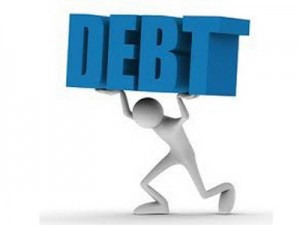Get Out of Debt by Defeating the Giant of Debt
It is time to get out of debt. The following is a very simple strategic process to eliminate debt. While it is simple it is not easy. Debt is a giant that needs to be defeated. It requires commitment and discipline to adhere to the plan that will defeat debt. The issue is, how bad do you want to get out of debt? If you want it bad enough you will do what it takes to get the victory over the giant of debt.
The Bible says in Proverbs 22:7, “The rich rule over the poor, and the borrower is the slave of the lender.” When you are a debtor you are a slave to the lender. Deut. 28:12 tells us we, “… shall lend to many, but you shall not borrow” We are to be the head and not the tail. It is time to live a life free from the slavery of debt.
I encourage you to begin to apply these three simple steps and begin to experience victory in your finances. I pray God give you wisdom and grace to begin to overcome the giant of debt in your life! There is a “Breakthrough For You” in your finances.
1. Create a Budget
Before you can get out of debt you have to stop getting in debt. That means you need to create a budget in which your expenses are less than your income.
To start, create a budget based on your current life style and circumstances. First, make a list of all the sources of income you have. Second, make a list of all the expenses you have. Make sure to include everything. I have included a link below for an automated worksheet.
CLICK HERE – for automated worksheet
Now begin to eliminated all unnecessary expenses. This takes discipline and self control but is absolutely necessary to accelerate eliminating debt. This is to generate as much surplus as possible. For some of you this will be necessary just to get to a place your expenses are less than your total income for others it will increase the amount of your discretionary income. This means sitting down with your spouse and reviewing what your spending. Depending on your current financial situation this may mean eliminating some things that have been luxuries – going out to eat, cell phones, cable, and other discretionary expenditures. The goal here is to create the largest amount of surplus that can be used to reduce the balance on your debts.
If after going through this process your expenses are still greater than your income you will need to make some of the following decisions:
1) getting second jobs for a season
2) changing current life style – smaller less expensive place to live.
3) down sizing your transportation – this may mean driving a less expensive car, getting one with better gas mileage, etc.
4) review other expenses that could be reduced by downsizing.
2. Make a List of Your Debts
This can be a major shock for some. Many have avoided compiling a comprehensive list of credit cards and other debts because they just have not wanted to face the problem. However, you have to know where you are and what your total debt is. Begin writing down the name of each creditor, the interest rate and the outstanding balance. Arrange the list according to the outstanding balance with the lowest balance first.
3. Paying Off Your Debt
First you want to try and reduce the interest rate on any or all of your accounts. This often can be accomplished simply by calling the creditor and asking them to reduce the interest rate. Second start paying more than the minimum amount on each debt even if it is $10 more. If you are addicted to minimum payment traps then you will never be out of debt for your whole life. Banks have arranged minimum debt traps in such way that a loan could take many years to be paid off if you are just paying in minimum amounts. Always pay more than the minimum. These small extra payments will save you literally thousand of dollars. Third take the total amount of additional discretionary income you have generated by reducing expenses and/or increasing you income and apply it toward the debt with the lowest balance. Once that account is paid off take the amount you have been paying on that debt and add it to what you have been paying on the second creditor. When the second creditor is paid off take all you have been applying to that account and add it to what you have been paying on the third creditor and continue until all your debts are paid off.



